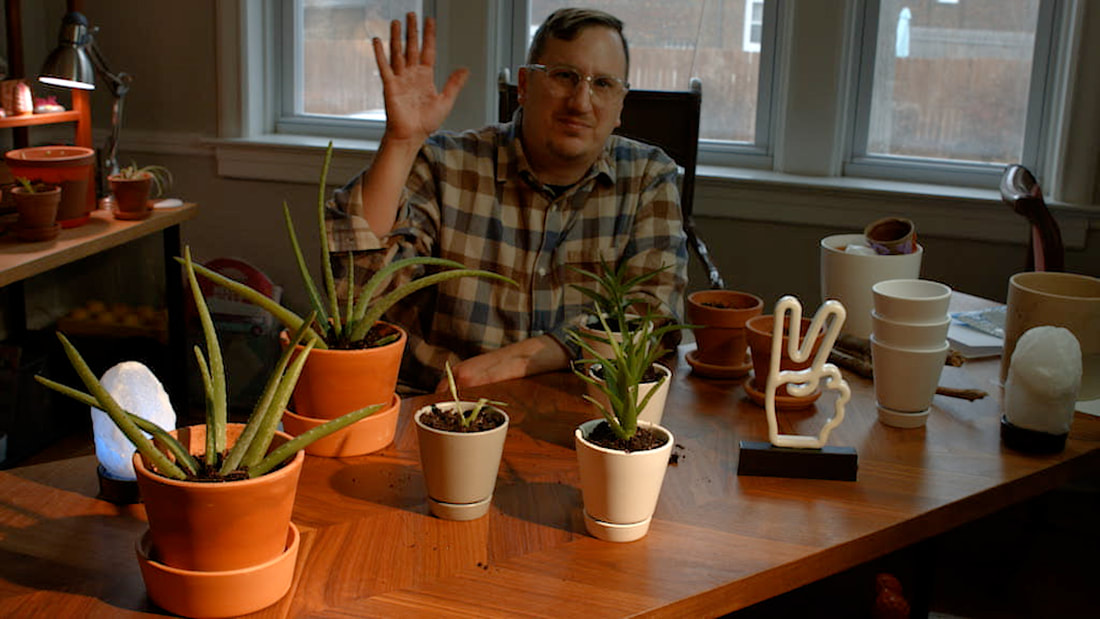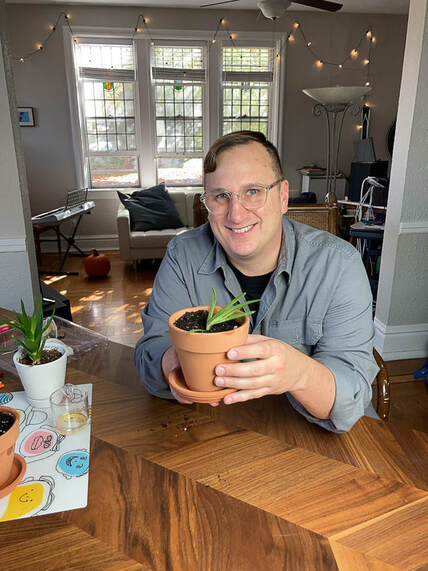How to Repot (and Care for) House Plants
by Charles Q. Drexler
published 2023.03.05
published 2023.03.05
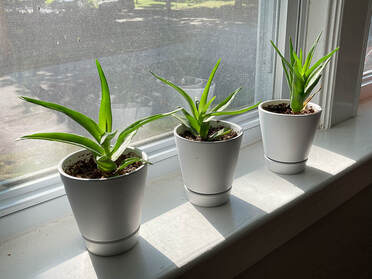
SUMMARY:
- Describes the process and supplies required for repotting a houseplant.
- Companion video demonstrates methods described in this article.
- Recommendations for low-maintenance, high aesthetic, easy care and air-purifying indoor plants.

If you've ever wanted to have plants in your home or office but didn't know where to start, this article is for you. We discuss the process of repotting a houseplant that comes from a store-bought starter plant. Also, we look at repotting plants that have outgrown the pots that they're in.
Adding house plants to your spaces not only ups your home and office decor game, but it also helps contribute in a small but actionable way toward making the world a greener, healthier and more sustainable place to live. You really can make a difference!
Gathering Ingredients – What You Will Need
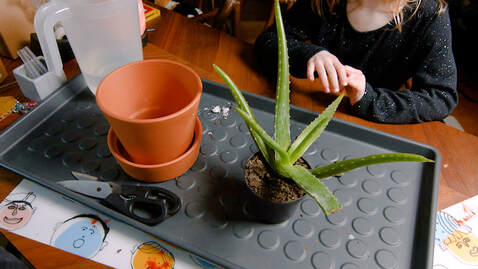 Planning the project.
Planning the project.
The first step is to gather all your tools and the materials that you need in order to complete this project. For simple indoor plants, you're really going to need only three things:
1. An appropriate size pot for your plant(s).
For simple, low-cost style, consider terra cotta pots with matching trays. These typically cost just a few dollars per pot, and the natural clay terra cotta does an outstanding job holding moisture while also allowing both the plant and soil to breathe.
Look for planters with drainage on the bottom so as not to drown the roots with accidental over-watering. Any excess water that drains out the bottom and is caught by the tray will be slowly reabsorbed by the plant and the potting soil as they renegotiate to the right saturation balance – a well-watered plant has soil that is evenly moist all around.
2. Potting Soil a/k/a Potting Mix
Potting Mix (or potting soil) is a mixture of topsoil, peat moss and a blend of other materials like sphagnum moss, bark, perlite, vermiculite. Formulated for growing plants in containers, potting mix naturally holds plants at an optimal moisture balance for indoor plants.
Tip: Potting Mix is generally sold in bulk, so you will likely have enough soil for more than one plant. To maximize your return on investment, consider buying a few extra plants and pots to complete more than one plant in your repotting project. For a small additional cost, you can easily multiply your output, creating multiple indoor plants for your space at one time.
Read more about potting soil (external): https://www.hgtv.com/outdoors/gardens/planting-and-maintenance/what-is-difference-between-potting-soil-garden-soil
3. A starter plant
By “starter” plant, I mean either a split from an existing plant or a starter plant from a home goods store. Using a starter (as opposed to starting from seed) makes for a simpler, more immediate results. Don’t know anything really about starting from a seed, but there are people who are wild about that. This this article is about repotting starter plants
Look for plants in the store that have a good shape and an overall healthy appearance. Select a starter plant that seems like it will grow well in your intended environment – in other words, “pick a winner.” See below for a list of recommended air-purifying plants.
And of course, you need to carve out some time and space to do this.
Best Indoor Plants for Low-Maintenance, High Aesthetic & Easy Care
Select plants that are easy to care for as a simple way to improve your quality of life. Among my research, one source provided exceptionally useful information that helped clarify my goals -- Casper, the mattress company, wrote a blog post on plants for the bedroom that identified 10 ideal indoor plants:
- Sansevieria (a/k/a Snake Plant or Mother-In-Law's Tongue)
- Heart Leaf Philodendron
- English Ivy
- Golden Pothos
- Spider Plant
- Rubber Plan
- Gardenia
- Peace Lily
- Areca Palm
- Aloe Vera
Photos by Charles Q Drexler © 2023 / absolute WIN
DID YOU KNOW? Aloe Vera is a great air purifying plant. In the 1970s, NASA identified 10 top air-purifying plants.
HOW TO GET STARTED
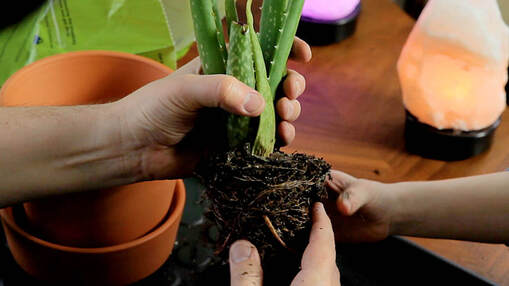 Massaging the root "ball"
Massaging the root "ball"
Once you have gathered the necessary materials together, the process is as simple as
- removing the plant from the old pot.
- breaking apart the root ball that has formed inside the pot and getting rid of all the old potting soil and potting mix that comes from the store or comes from the old pot.
- trimming old roots and leaves.
Use scissors to remove any old or dead growths. Take off the brown or yellow leaves, trim away old roots or overgrown roots, - planting the roots into the new pot with new potting soil. Make sure that the plant stays at the right level inside the pot as you're filling the pot and pat the soil down to make sure there are no air pockets inside the soil.
When & Why to Re-Pot a Houseplant
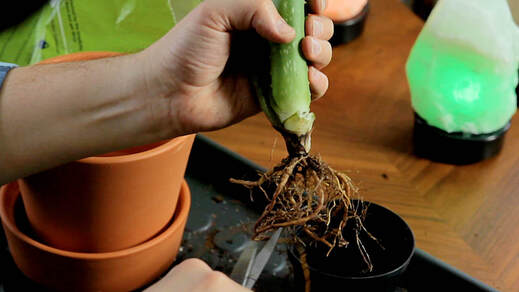 Trimming old roots
Trimming old roots
After about a year, your plants will start to outgrow the pot that they're in, and it is recommended that you repot them, moving them up into a bigger pot. Or, as you see in our video, a plant may grow into two plants within the same pot and you may need to separate them into two smaller pots.
According Adrian Higgins, Garden Columnist for the Washington Post, repotting a houseplant must be done every year or so, when when the roots are starting to get snug inside the pot and the plant has lost the feeling of being “in the jungle ... Spring is the time to do this,” he says. His video is extremely helpful and confidence-building; we recommend checking it out along with our video.
However, we find that plants from a store need to be repotted for a different reason: their root structures are stunted, broken,and starved. The potting mix they sit is a nasty mix of nutrients and laced with preservatives have been transported in and potting soils that are heavily So they will last in-store displays
Additionally, we recommend replacing the store plastic containers a store-bought plants. More on this below.
Be sure to check the article that's linked to this video for recommendations about plants that are particularly easy to report and care for with minimal watering and different sunlight conditions. I also recommend checking out the article for air-purifying plants. Aloe Vera is a great air purifying plant.
According Adrian Higgins, Garden Columnist for the Washington Post, repotting a houseplant must be done every year or so, when when the roots are starting to get snug inside the pot and the plant has lost the feeling of being “in the jungle ... Spring is the time to do this,” he says. His video is extremely helpful and confidence-building; we recommend checking it out along with our video.
However, we find that plants from a store need to be repotted for a different reason: their root structures are stunted, broken,and starved. The potting mix they sit is a nasty mix of nutrients and laced with preservatives have been transported in and potting soils that are heavily So they will last in-store displays
Additionally, we recommend replacing the store plastic containers a store-bought plants. More on this below.
Be sure to check the article that's linked to this video for recommendations about plants that are particularly easy to report and care for with minimal watering and different sunlight conditions. I also recommend checking out the article for air-purifying plants. Aloe Vera is a great air purifying plant.
As I was looking to populate my home and workplace with air purifying plants, it was important to me that (1) the plants would be easy to care for, and (2) the new plants would improve the visuals overall “feng shui'' of their designated new homes.
Learn more about feng shui: https://www.thespruce.com/what-is-feng-shui-1275060
Learn more about feng shui: https://www.thespruce.com/what-is-feng-shui-1275060
ADDITIONAL RESOURCES
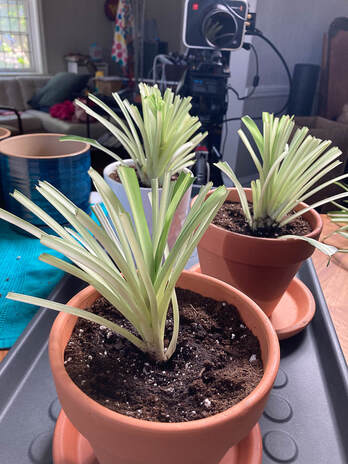 Behind the scenes
Behind the scenes
How To Repot Your Houseplant - The Sill (#1 search result “repotting”)
https://www.thesill.com/blog/plant-care-repotting
How to Repot a Plant, Swanson’s Nursery
https://www.swansonsnursery.com/blog/how-to-repot-a-plant
How to Divide Potted Plants
https://homeguides.sfgate.com/divide-potted-plants-63275.html
|
Absolute WIN is a web platform for lifestyle content, focusing on health, wellness and sustainability. We produce and share positive content to inspire personal change. If you enjoyed this article please share and keep checking back for new content. I hope this article inspires you towards positive choices, towards health, wellness and sustainability. Good luck. Be well. Share your learnings with others. Have a wonderful day. - CQD |
article published: 2023.03.05
Thank you for your interest in Absolute WIN. If you enjoy this content, please click this link to subscribe to our YouTube channel.

